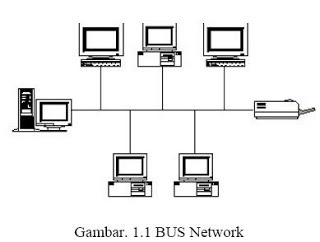
 |
||
| BASIC CONCEPT OF NETWORK |
NETWORK ARCHITECTURE |
NETWORK TOPOLOGY |
| NETWORK TOPOLOGY |
||
| BUS TOPOLOGY |
RING TOPOLOGY |
STAR TOPOLOGY |
| BUS |
 |
| A bus network consists of a single central cable (backbone/trunk) to which all computers and other devices connect (node) |
| * The bus is the physical cable that connects the computers and other devices * Each devices is connected to the single bus cable through T-connector * A terminator is required at each end of the bus cable to prevent the signal from bouncing back and forth on the bus cable |
How the data transmit: In a bus network, it transmit data, instructions and receiving device is included) as a series of signal in both directions where all nodes receive the signal but only the intended recipient will accept the signal and the rest will ignore |
|
Advantages of Bus Topology |
Disadvantages of Bus Topology |
|
Failure of one device usually does not affect the rest of the
bus network |
The network will e malfunctioned if the single central cable
breaks down |
|
Bus networks are inexpensive and easy to install |
A break in the backbone (single central cable) will prevent
all systems from accessing the network |
|
Computers and other devices can be attached and detached at
any point without disturbing the rest of the network |
If more computers are connected, the performance of the
network will become slower because of data collision |